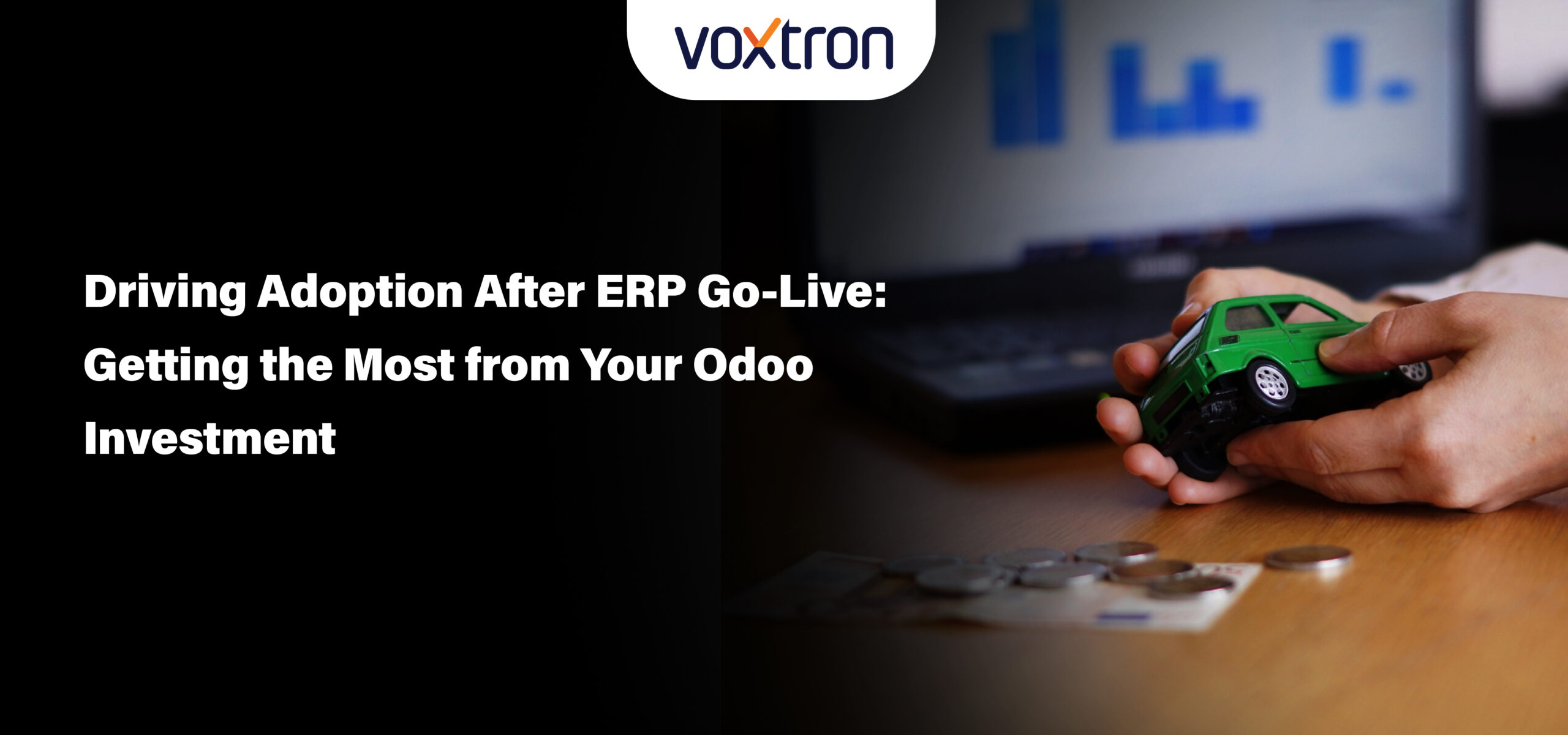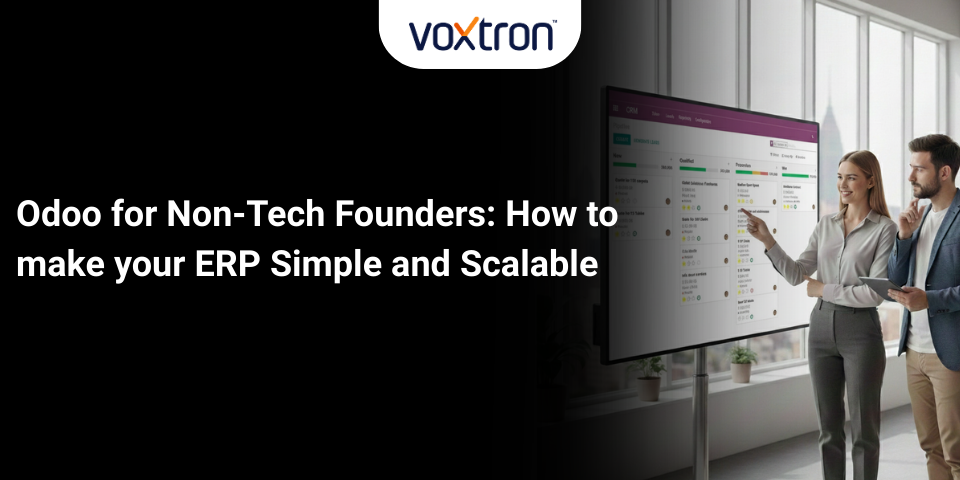
What Your Employees Should Know Before Transitioning to Odoo
September 17, 2025
The Key to Better AI Performance: Building a Robust Knowledge Base
October 8, 2025Driving Adoption After ERP Go-Live: Getting the Most from Your Odoo Investment
Introducing a new ERP system becomes necessary when organizations outgrow legacy processes, struggle with fragmented data, or require greater efficiency across departments. The decision to implement a modern solution like Odoo addresses these structural needs. However, it also introduces a new challenge: employee resistance.
Employees tend to rely on familiar workflows even when they are inefficient. Hence, the true test after an ERP go-live is not system performance. It is employee adoption.
This is where organizations must shift their perspective. Instead of viewing ERP adoption as something that naturally follows a successful deployment, it must be treated as a deliberate, well-planned phase in itself. By anticipating resistance and structuring support around it, businesses can create an environment where employees embrace Odoo as an enabler rather than a disruptor.
Understanding Why Employee Resistance Happens
Employees often fear that a new ERP system will:
- Increase their workload by forcing them to learn unfamiliar processes.
- Expose inefficiencies in their current way of working.
- Limit their control over data or decision-making.
- Lead to tighter performance monitoring.
These fears are amplified when training feels generic or when employees do not see immediate relevance to their daily responsibilities. Acknowledging these challenges upfront sets the stage for a smoother adoption journey.
The Importance of Role-Based Training
One of the most common mistakes organizations make post-ERP implementation is opting for a one-size-fits-all training program. It often leaves employees confused about how Odoo fits into their actual roles.
A better approach is to tailor training to departmental needs and individual responsibilities. For example:
- Finance teams need hands-on exposure to Odoo’s accounting workflows.
- Sales teams must learn how to manage leads, pipelines, and customer interactions.
- Warehouse staff need practical training on Odoo’s inventory module.
When training mirrors the tasks employees perform every day, the system feels less like a burden and more like a support structure.
Using Odoo’s Knowledge and Documents Apps for Collaboration
Successful Odoo adoption requires collaboration across departments that may have previously worked in silos. Odoo’s Knowledge and Documents apps can be powerful tools in this regard.
- Knowledge app: A centralized space where organizations can build a shared knowledge base. Training notes, process guidelines, and FAQs can all be stored here, allowing employees to refer back whenever they face a roadblock.
- Documents app: Facilitates seamless sharing of files, approvals, and version control across teams, reducing the need for external tools and minimizing confusion.
By embedding these apps into everyday operations, businesses make adoption easier because the tools themselves guide collaboration. Voxtron often integrates these apps into training sessions so that employees learn not just how to use Odoo, but how to leverage it for cross-functional teamwork.
Setting a Smart Timeline for Post-Go-Live Progress
A rushed post-go-live timeline often creates frustration among employees and undermines confidence in the system. Instead, organizations should adopt a phased approach that includes checkpoints for evaluation.
A smart timeline could include:
- Initial familiarization: Basic training for daily use, supported by quick-reference materials.
- Focused reinforcement: Department-specific deep dives, role-specific workshops, and additional Q&A sessions.
- Performance evaluation: Reviewing productivity metrics, gathering employee feedback, and adjusting training as needed.
This phased approach ensures that employees are not overwhelmed and that the system is continuously aligned with business needs.
The Importance of “Train the Trainer”
Not every organization can rely solely on external trainers for long-term ERP adoption. Internal champions are critical. These are employees who not only understand Odoo deeply but can also guide colleagues when questions arise.
That is why “train the trainer” is an essential part of Odoo adoption. By equipping in-house trainers with both technical knowledge and teaching skills, organizations can build a self-sustaining support system. These trainers become the bridge between employees and leadership, reducing dependency on external consultants.
At Voxtron, we emphasize this model during deployment. Our trainers empower internal staff to carry that knowledge forward, ensuring continuity long after the initial project is completed.
Overcoming Common Adoption Challenges
Even with strong training and collaboration tools, challenges will arise. Some of the most common include:
- Employees reverting to old habits: Without reinforcement, staff may continue using legacy systems or offline methods.
- Information overload: Too much training in too little time can overwhelm users.
- Uneven adoption across departments: Some teams may embrace Odoo quickly while others lag behind.
Addressing these requires vigilance. Leadership should encourage open communication, celebrate early adopters, and allocate time for retraining where necessary. Adoption is not linear—it requires patience and adaptability.
Partner with Voxtron for Odoo Deployment and Training
Choosing the right ERP is important, but choosing the right partner for deployment and training is just as critical. Voxtron’s dual expertise as both an Odoo partner and a training provider makes us uniquely positioned to drive adoption. We deliver:
- Customized training programs that align with each department’s needs.
- Hands-on guidance in leveraging Odoo’s Knowledge and Documents apps to foster collaboration.
- Smart implementation timelines that balance efficiency with employee readiness.
- Effective training sessions, ensuring internal teams remain empowered well beyond go-live.
We understand that the true return on an Odoo investment comes not just from the system itself but from how effectively it is adopted across the organization. That is why our approach is designed to anticipate resistance, address challenges, and guide employees’ step by step until Odoo becomes a natural part of their workflow.
Conclusion
Driving ERP adoption is not about forcing employees into new processes. It is about making those processes easier, clearer, and more relevant to their daily work. With Odoo, organizations have a powerful ERP platform at their fingertips. But it is only through careful training, ongoing support, and collaborative tools that its full potential can be realized.
Resistance to change will always exist. However, with the right strategies and the right partner, it can be transformed into readiness and confidence. For SMEs and enterprises considering Odoo, the key takeaway is clear: ERP success does not end at go-live, it begins there.
For more information on how to make your Odoo ERP implementation and employee training successful, contact our team today.




